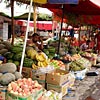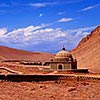China Silk Road Tour
 The Silk Road is a historically important international trade route between China and the Mediterranean. Because silk comprised a large proportion of trade along this road, in 1877, it was named 'the Silk Road' by Ferdinand von Richthofen, an eminent German geographer.
The Silk Road is a historically important international trade route between China and the Mediterranean. Because silk comprised a large proportion of trade along this road, in 1877, it was named 'the Silk Road' by Ferdinand von Richthofen, an eminent German geographer.
The Silk Road is not only an ancient international trade route, but also a splendid cultural bridge liking the cultures of China, India, Persia, Arabia, Greek and Rome. The scenery and sights along the Silk Road are also spectacular and intriguing. There are well-known Mogao Grottoes in Dunhuang, the bustling Sunday Bazaar in Kashgar and exotic customs in Xinjiang Uygur Autonomous Region, etc.
Silk Road Tour Attractions
 Urumqi
Urumqi
Urumqi is the capital of the Xinjiang Uygur Autonomous Region. With a population of two million gaily-dressed ethnic inhabitants, the city is likened to a piece of emerald embedded at the foot of the Tianshan Mountains. It lies in the lofty ice-capped Bogda Peak and vast Salt Lake in the east; in the rolling pine-covered Southern hill, a well-known scenic district, in the south; and in the alternating fields and sand dunes of Zunggar Basin in the northwest.
 Kashgar
Kashgar
Kashgar means a "gathering place of boulders" in the Uygur language. It is one of the oldest but richest oasis at the west end of China. For thousands of years, it has been regarded as the economic, political, cultural and communication center south of the Tianshan Mountains. In addition to the beautiful natural scenery, there are many tumuli (burial mounds) and ancient buildings of Islam and Buddhism in and around the city.
 Turpan
Turpan
Turpan is an old city with a long history. Traces have been found of humans living there as far back as 6,000 years ago. Turpan means 'the lowest place' in the Uygur language and 'the fertile land' in Turki. Lying in the Turpan Basin, the elevation of most of the places in the area is below 1,640 feet. Turpan is the city with the lowest elevation in China.




